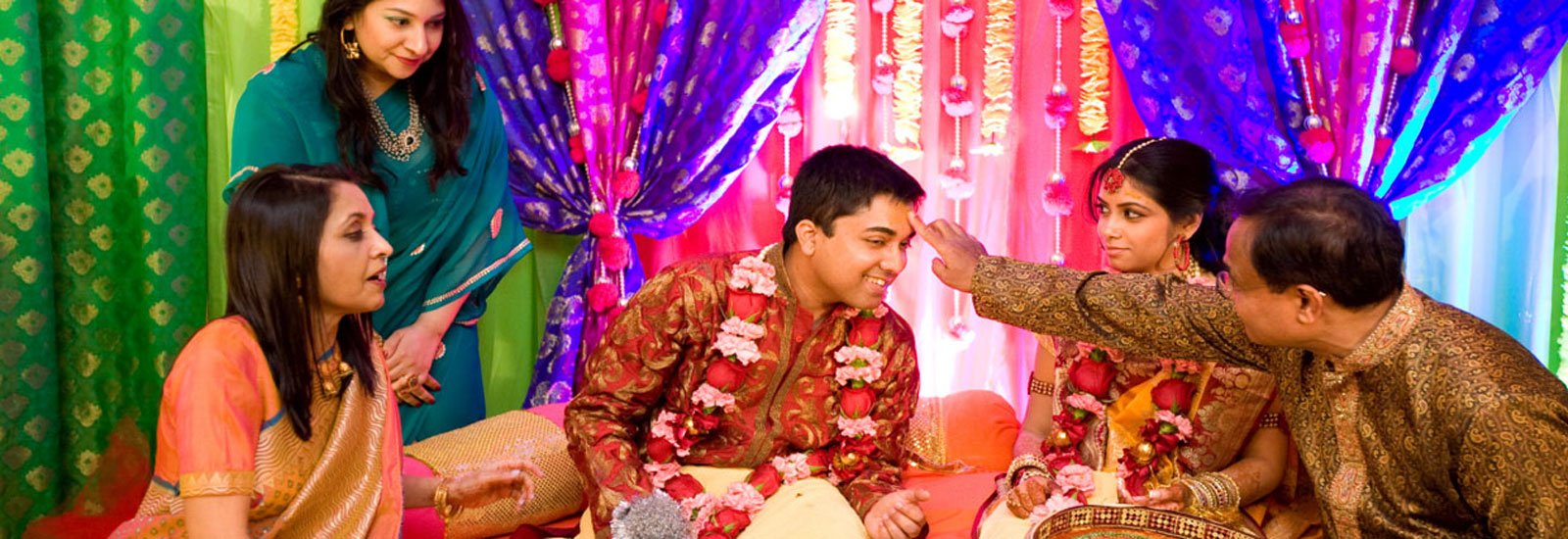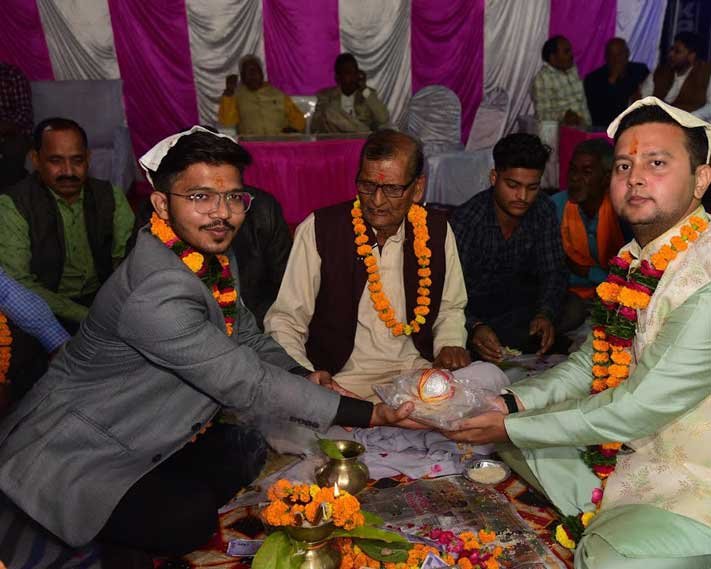


Tilak Ceremony is reckoned as the first step to the bond between the two families. This auspicious event takes place mostly in the groom's residence, where the male members of the bride's family visit to put Kumkum or vermilion on his forehead. Though there are many versions of Tilak ceremony in different parts of the state, the one mentioned one is commonly witnessed. Apart from this, music and dance is also a major part of this ceremony in many states of the country.
One of the most important pre-wedding ceremonies is the Tilak. It holds an importance in traditional Hindu customs as regards to its auspiciousness. The Ceremony varies from one state to another and also distinct in case of diverse castes and creeds. Tilak is generally put by the male members of the groom’s family using Kumkum, the red vermillion which is not used by the female members of the family.
Tilak is usually held at the groom’s residence or often held in temples so that the groom is blessed by the Almighty before beginning his married life. It is usually attended by the male members of both the families. The father of the bride along with other associates visits the house of the groom. There he applies the auspicious tilak on the forehead of the groom to ensure that the he is finally ready for marriage and also that the bride's family has accepted him as their would-be son in law. The bride’s father offers gifts ranging from fruits to clothes, goods and sweets to the groom and his family during the ceremony. The groom’s father sends sugar, coconut, rice, clothes, jewelry and henna to the bride’s family in exchange. Generally the groom’s relatives carry these objects to the bride’s house with much gaiety.

A small hawan and pooja also takes place, wherein the priest chants mantra to seek blessings of the Lord. After this the brother of the bride applies tilak to the groom as a mark of respect and acceptance. He then endows him with gifts such as clothes, sweets, fruits, flowers, garlands and token money. All the other male members of the bride's family such as uncles, cousins etc also perform the same ritual to state their loving approval of the groom. The ceremony is followed by refreshments to celebrate the new accord between the duo families. After this, the family of the groom also sends gifts for the bride.
The tilak ceremony is conducted mainly at the groom's residence because according to the Hindu custom only the groom is eligible for the tilak ceremony; it is only for the boy and not for the girl. However, gifts are exchanged between both the families. In some caste it is called the Chenkai Ceremony. In India, the bridegroom and his family stand in the higher status. Therefore, after they get ready for the wedding the first ceremony that sanctifies the seal of marriage is Tilak ceremony.
Usually, the bride and her mother do not participate in this ceremony; mostly the male family members and relatives of the bride are present at the function. In many families they celebrate both the tilak and engagement ceremony together. The Indian wedding celebration is a complex and formal process. There are many rituals and customs connected with diverse kinds of wedding ceremonies. Traditionally the bride's father looks after all the ceremonial activities. It was initially held one month before the actual wedding day, but now people have become quite flexible with the customs and this ceremony is usually held one day after the engagement or with the engagement, in morning or evening.
The ceremony of tilak brings together both the families where the elders of both the families blesses the girl and boy and offers them gifts. Different regions of the country celebrate it in different manner. But the genuine reason behind its celebration is the bonding not only between the bride and groom but also between the two families.